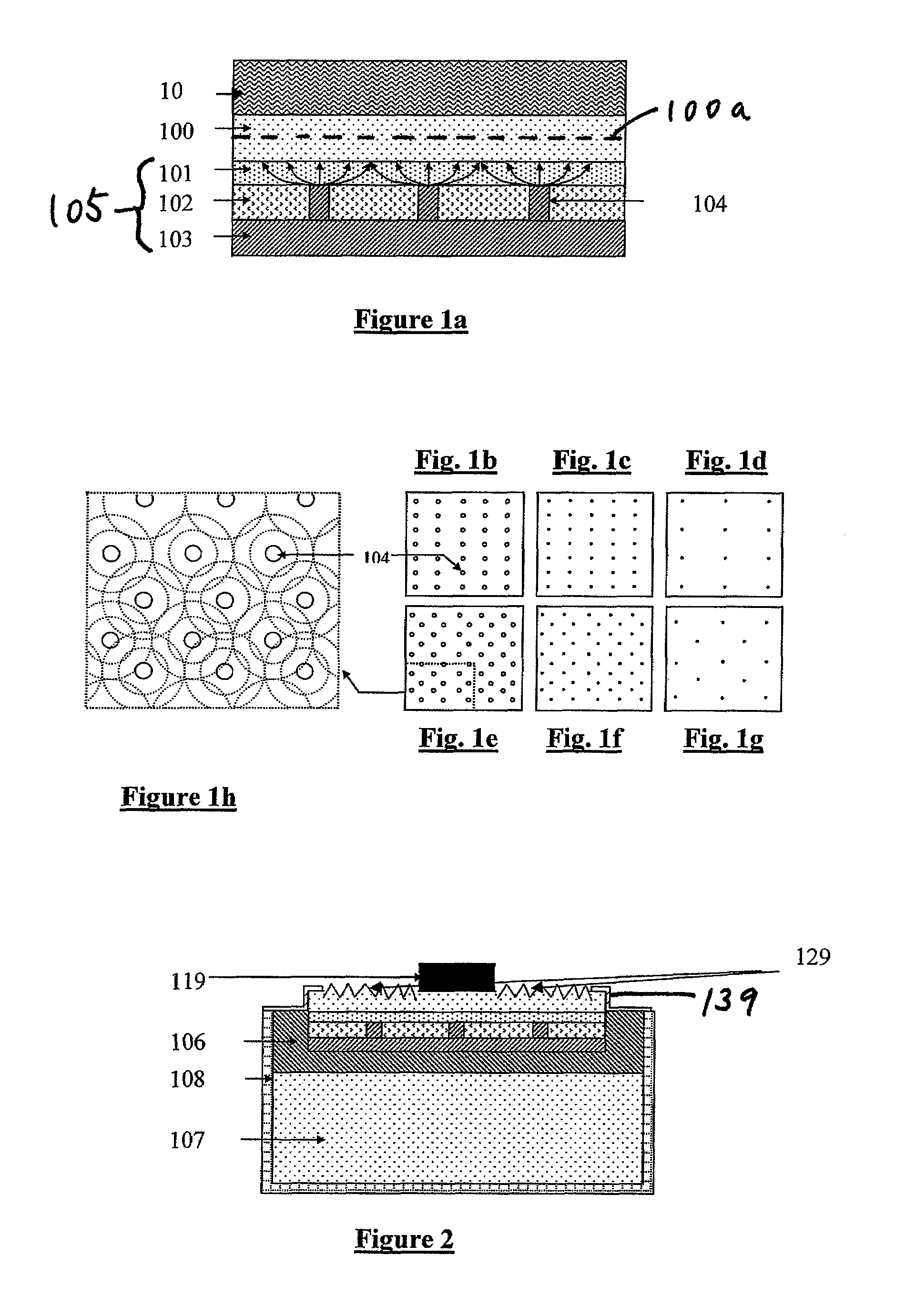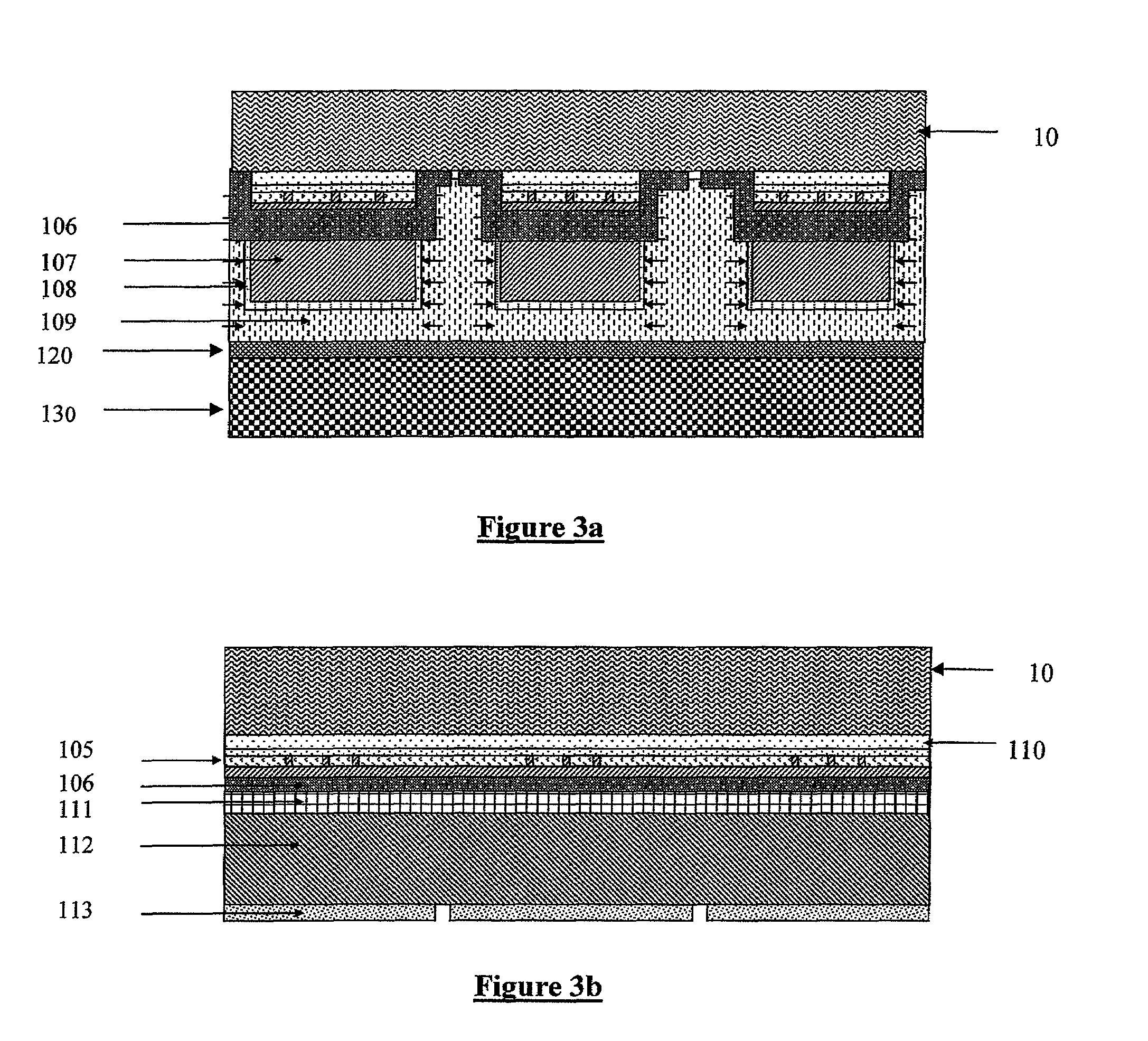High light efficiency solid-state light emitting structure and methods to manufacturing the same
a technology of solid-state light and structure, which is applied in the direction of semiconductor/solid-state device manufacturing, semiconductor devices, electrical devices, etc., can solve the problems of reducing the reflectivity of odr, disadvantageous structure above fig. 5, and device performance degradation, so as to enhance the reflectivity and thus the extraction efficiency of led devices. , the effect of increasing the index contrast of the reflective mirror
- Summary
- Abstract
- Description
- Claims
- Application Information
AI Technical Summary
Benefits of technology
Problems solved by technology
Method used
Image
Examples
Embodiment Construction
[0039]In some of the embodiments of the present invention, a light emitting structure is provided with high light extraction efficiency, as well as high thermal dissipation properties. The structure and manufacturing processes provide three major advantages when compared to existing structures and manufacturing methods:[0040]1. A Composite Reflective Mirror is used to enhance the light extraction efficiency and total brightness output of the light-emitting device.[0041]2. An innovative method is used to manage physical or mechanical stresses within the die structure. The light-emitting material is supported by a new substrate that has a different CTE than the active epi-layers of the device (i.e., the layers of the device that are grown using an epitaxial growth process). The substrate that supports the epi-layers is designed to provide robust mechanical support to the epi-layers as well as high thermal conductivity. This is accomplished by using a substrate or carrier material that...
PUM
 Login to View More
Login to View More Abstract
Description
Claims
Application Information
 Login to View More
Login to View More - R&D
- Intellectual Property
- Life Sciences
- Materials
- Tech Scout
- Unparalleled Data Quality
- Higher Quality Content
- 60% Fewer Hallucinations
Browse by: Latest US Patents, China's latest patents, Technical Efficacy Thesaurus, Application Domain, Technology Topic, Popular Technical Reports.
© 2025 PatSnap. All rights reserved.Legal|Privacy policy|Modern Slavery Act Transparency Statement|Sitemap|About US| Contact US: help@patsnap.com



